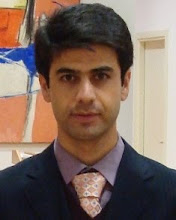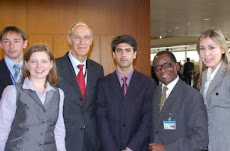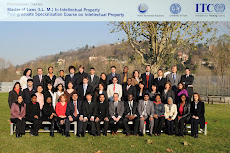What is a trademark?
A trademark is a distinctive sign which identifies certain goods or services as those produced or provided by a specific person or enterprise. Its origin dates back to ancient times, when craftsmen reproduced their signatures, or "marks" on their artistic or utilitarian products. Over the years these marks evolved into today's system of trademark registration and protection. The system helps consumers identify and purchase a product or service because its nature and quality, indicated by its unique trademark, meets their needs.
A trademark is a distinctive sign which identifies certain goods or services as those produced or provided by a specific person or enterprise. Its origin dates back to ancient times, when craftsmen reproduced their signatures, or "marks" on their artistic or utilitarian products. Over the years these marks evolved into today's system of trademark registration and protection. The system helps consumers identify and purchase a product or service because its nature and quality, indicated by its unique trademark, meets their needs.
What does a trademark do?
A trademark provides protection to the owner of the mark by ensuring the exclusive right to use it to identify goods or services, or to authorize another to use it in return for payment. The period of protection varies, but a trademark can be renewed indefinitely beyond the time limit on payment of additional fees. Trademark protection is enforced by the courts, which in most systems have the authority to block trademark infringement.
In a larger sense, trademarks promote initiative and enterprise worldwide by rewarding the owners of trademarks with recognition and financial profit. Trademark protection also hinders the efforts of unfair competitors, such as counterfeiters, to use similar distinctive signs to market inferior or different products or services. The system enables people with skill and enterprise to produce and market goods and services in the fairest possible conditions, thereby facilitating international trade.
A trademark provides protection to the owner of the mark by ensuring the exclusive right to use it to identify goods or services, or to authorize another to use it in return for payment. The period of protection varies, but a trademark can be renewed indefinitely beyond the time limit on payment of additional fees. Trademark protection is enforced by the courts, which in most systems have the authority to block trademark infringement.
In a larger sense, trademarks promote initiative and enterprise worldwide by rewarding the owners of trademarks with recognition and financial profit. Trademark protection also hinders the efforts of unfair competitors, such as counterfeiters, to use similar distinctive signs to market inferior or different products or services. The system enables people with skill and enterprise to produce and market goods and services in the fairest possible conditions, thereby facilitating international trade.
What kinds of trademarks can be registered?
The possibilities are almost limitless. Trademarks may be one or a combination of words, letters, and numerals. They may consist of drawings, symbols, three- dimensional signs such as the shape and packaging of goods, audible signs such as music or vocal sounds, fragrances, or colors used as distinguishing features.
In addition to trademarks identifying the commercial source of goods or services, several other categories of marks exist. Collective marks are owned by an association whose members use them to identify themselves with a level of quality and other requirements set by the association. Examples of such associations would be those representing accountants, engineers, or architects. Certification marks are given for compliance with defined standards, but are not confined to any membership. They may be granted to anyone who can certify that the products involved meet certain established standards. The internationally accepted "ISO 9000" quality standards are an example of such widely-recognized certifications.
The possibilities are almost limitless. Trademarks may be one or a combination of words, letters, and numerals. They may consist of drawings, symbols, three- dimensional signs such as the shape and packaging of goods, audible signs such as music or vocal sounds, fragrances, or colors used as distinguishing features.
In addition to trademarks identifying the commercial source of goods or services, several other categories of marks exist. Collective marks are owned by an association whose members use them to identify themselves with a level of quality and other requirements set by the association. Examples of such associations would be those representing accountants, engineers, or architects. Certification marks are given for compliance with defined standards, but are not confined to any membership. They may be granted to anyone who can certify that the products involved meet certain established standards. The internationally accepted "ISO 9000" quality standards are an example of such widely-recognized certifications.
How is a trademark registered?
First, an application for registration of a trademark must be filed with the appropriate national or regional trademark office. The application must contain a clear reproduction of the sign filed for registration, including any colors, forms, or three-dimensional features. The application must also contain a list of goods or services to which the sign would apply. The sign must fulfill certain conditions in order to be protected as a trademark or other type of mark. It must be distinctive, so that consumers can distinguish it as identifying a particular product, as well as from other trademarks identifying other products. It must neither mislead nor deceive customers or violate public order or morality.
Finally, the rights applied for cannot be the same as, or similar to, rights already granted to another trademark owner. This may be determined through search and examination by the national office, or by the opposition of third parties who claim similar or identical rights.
First, an application for registration of a trademark must be filed with the appropriate national or regional trademark office. The application must contain a clear reproduction of the sign filed for registration, including any colors, forms, or three-dimensional features. The application must also contain a list of goods or services to which the sign would apply. The sign must fulfill certain conditions in order to be protected as a trademark or other type of mark. It must be distinctive, so that consumers can distinguish it as identifying a particular product, as well as from other trademarks identifying other products. It must neither mislead nor deceive customers or violate public order or morality.
Finally, the rights applied for cannot be the same as, or similar to, rights already granted to another trademark owner. This may be determined through search and examination by the national office, or by the opposition of third parties who claim similar or identical rights.
How extensive is trademark protection?
Almost all countries in the world register and protect trademarks. Each national or regional office maintains a Register of Trademarks which contains full application information on all registrations and renewals, facilitating examination, search, and potential opposition by third parties. The effects of such a registration are, however, limited to the country (or, in the case of a regional registration, countries) concerned.
In order to avoid the need to register separately with each national or regional office, WIPO administers a system of international registration of marks. This system is governed by two treaties, the Madrid Agreement Concerning the International Registration of Marks and the Madrid Protocol. A person who has a link (through nationality, domicile or establishment) with a country party to one or both of these treaties may, on the basis of a registration or application with the trademark office of that country, obtain an international registration having effect in some or all of the other countries of the Madrid Union. At present, more than 60 countries are party to one or both of the agreements.
Almost all countries in the world register and protect trademarks. Each national or regional office maintains a Register of Trademarks which contains full application information on all registrations and renewals, facilitating examination, search, and potential opposition by third parties. The effects of such a registration are, however, limited to the country (or, in the case of a regional registration, countries) concerned.
In order to avoid the need to register separately with each national or regional office, WIPO administers a system of international registration of marks. This system is governed by two treaties, the Madrid Agreement Concerning the International Registration of Marks and the Madrid Protocol. A person who has a link (through nationality, domicile or establishment) with a country party to one or both of these treaties may, on the basis of a registration or application with the trademark office of that country, obtain an international registration having effect in some or all of the other countries of the Madrid Union. At present, more than 60 countries are party to one or both of the agreements.











No comments:
Post a Comment